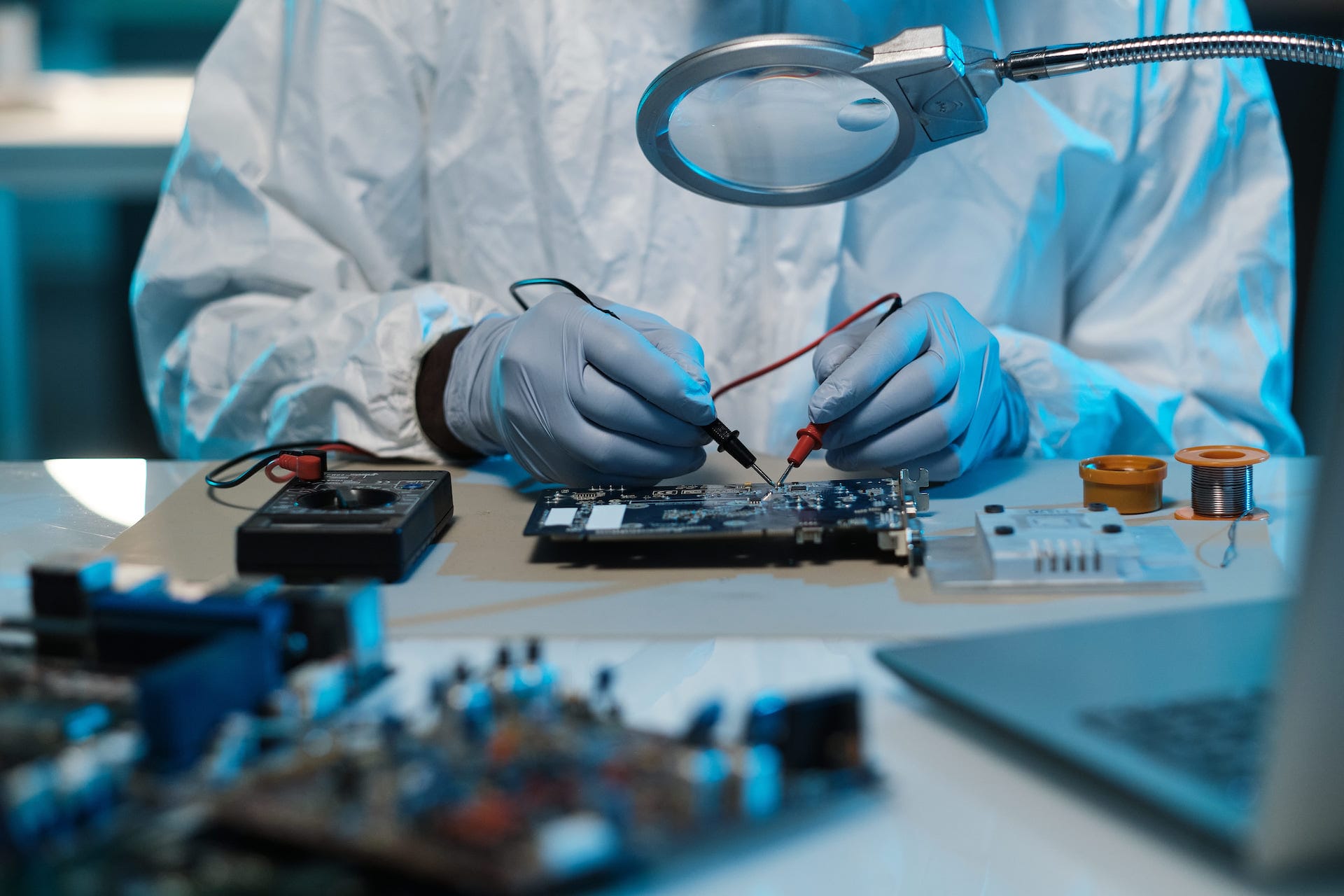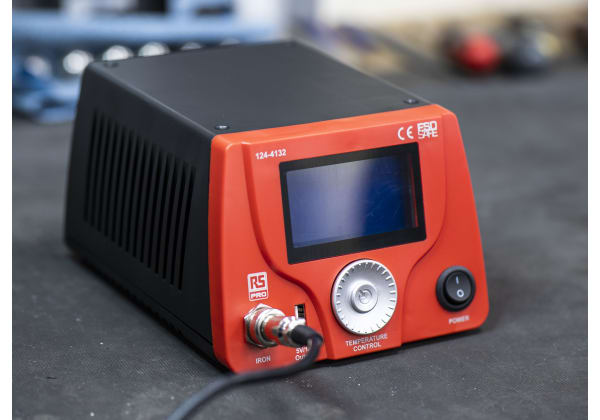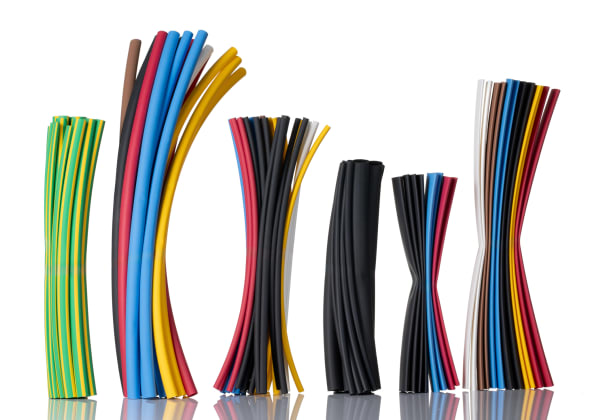- Published 20 Sept 2024
- Last Modified 20 Sept 2024
- 6 min
Guide to Solder Sleeves
Solder sleeves – electrical connectors that splice wires together – are a crucial part of industries such as automotive and aerospace. Our guide explains the types of solder sleeves on the market, how to use them, and solder sleeve applications.
Used in electronics for joining or splicing wires, solder sleeves are a type of electrical connector. The sleeves, also referred to as heat shrink solder sleeves, create a soldered connection between wires that’s convenient and reliable. Read on for the lowdown on solder sleeves, from the types of solder sleeve on the market, to how to use them and some common solder sleeve uses.
What is a Solder Sleeve?
First, just what is a solder sleeve? Solder sleeves are electrical connectors featuring a combination of heat-shrink tubing, adhesive, and preformed solder for splicing and joining wires. They provide a convenient way of creating tough, insulated connections. Along with being reliable, solder sleeves prevent ingress of moisture and protect the connection from dust. Splicing conductors in parallel is a common use of solder sleeves, but they are also often used to attach a ground wire to a shielded cable.
Compared to deploying solder manually, solder sleeves tend to provide a uniform level of solder and adhesive, helping ensure consistent connections in a number of different wire splices. Solder sleeves are also compact and overcome some of the other issues of manual soldering such as cold joints (where a lack of consistency in the soldering process creates a weak or unreliable connection).
Solder Sleeve Types
Solder sleeves tend to come in a wide variety of diameters and lengths and there are different types of solder sleeve for various applications. These types include:
Heat Shrink Solder Sleeves
Heat shrink solder sleeves are lined with adhesive and solder and are typically heated up with a hot air gun, which melts the sleeve and seals the connection. The adhesive helps grip the wires and provides extra strength during the heat-shrinking process. The adhesive also seals the soldered area so that contaminants such as moisture and dirt can’t get in. These types of solder sleeves enjoy a wide range of uses, from the car industry to commercial electronics, the marine sector, and defence.
Connectivity Solder Sleeves
For wiring to function correctly, strong cable terminations are crucial. That’s where connectivity solder sleeves come in. They make connections between wires and the terminals on equipment, enabling electricity to flow. Types of connectivity solder sleeves include heat shrink versions that are specially designed for cable terminal applications. For example, RS offers heat shrink solder sleeves for termination of cable shields. These connectors, like heat shrink solder sleeves, provide a sealed and insulated solder joint and are available in many different sizes and types.
Solder Sleeves and Shield Tubing
A form of wire protection similar to solder sleeves comes in the form of heat-shrink shield tubing. Like a heat shrink solder sleeve, the diameter of the tubing decreases when it is heated, providing a snug layer of protection around the cable or wire. Like solder sleeves, shield tubing prevents physical damage and ingress of dust and moisture. Shield tubing is thus an important part of the armoury of cable joints and cable sleeving equipment.
How to Use Solder Sleeves
Solder sleeves allow you to join two wires without the need for crimping. The engineer applies heat with a heat gun to shrink the tubing down and melt the solder, creating a waterproof connection.
How to Use Heat Shrink Solder Sleeves
If you’re wondering how to use heat shrink solder sleeves, read on.
Using a solder sleeve is simple but requires care. First, you should use a wire stripper to strip some of the insulation from the end of the wires you want to splice together. Then pick up your heat shrink solder sleeve and slide it over one wire so it covers the stripped part. Position the other wire to be joined in contact with the first wire. Use a heat gun to heat up the heat shrink solder sleeve. As the sleeve warms, solder melts and flows to create the joint, while the solder sleeve shrinks and adhesive inside it helps insulate it from the elements. Don’t forget to give the solder time to cool off and solidify before you do anything else with the new splice.

Solder Sleeve Kits
Solder sleeve kits include a wide range of solder sleeve sizes suited to different types of wire and cable. For example, RS carries solder sleeve introduction kits for terminating a wide range of cables and wires in a handy case. We also offer solder sleeve kits featuring transparent sleeves, making it straightforward to inspect wiring without damaging it.
Solder Sleeve Applications
Solder sleeves are widely used in the automotive industry. Cars contain a lot of wiring and wiring looms, so engineers often need to connect them when working on car engines and installing components like audio and infotainment equipment, headlights, and cameras.
Solder sleeves are often used in aerospace manufacturing, where there is a huge variety of electronic equipment (and wiring), such as in avionics systems. High quality solder joints are crucial to safe operation of the aircraft and so soldering standards and practices are among the best in the manufacturing industry. Solder sleeves are also used extensively in consumer electronics, HVAC systems, and sprinklers.
Solder Sleeve Checklist
When deciding on how to use a solder sleeve, bear in mind the following solder sleeve instructions and tips:
- Use the right type of heat gun. Certain solder sleeves will not work correctly with certain types of heat gun. Although it may seem that a successful connection has been created, the joint may not be as durable as it should be.
- Apply the correct amount of heat. The sleeve of the solder sleeve requires less heat to shrink than the adhesive and preformed solder itself. If you don’t use enough heat, the solder won’t melt around the wires you are trying to splice. Too much heat, on the other hand, and the plastic solder sleeve insulation may melt.
- Don’t forget to allow the solder sleeve to cool. You should allow your newly spliced connection to cool to room temperature before applying any tests or checking that the circuit is performing as you want it to.
- Visually inspect the connection. It’s important to check the electrical connection has been made correctly when using a solder sleeve, so test that power is flowing as it should be. A visual inspection of the spliced wires is also an important step in quality assurance. The solder sleeve heat shrink should be tight, and it should be clear that the adhesive has melted. The preformed solder should also have melted to form a bond enclosing the exposed wires. Finally, there should be no charring of the insulated part of the solder sleeve.
Get all these factors right, and you should achieve great connections using solder sleeves.
RS offers a wide variety of soldering equipment. Browse our soldering range today.



